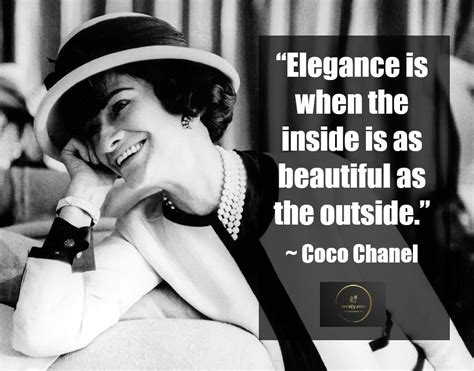1926 coco chanel | coco chanel most famous dress 1926 coco chanel The year was 1926: The month was October. The Roaring Twenties were in full swing when . Louis Vuitton Belt From the 2018 Collection Black Coated Canvas Printed Monogram Eclipse Silver-Tone Hardware Peg-In-Hole Closure Includes Dust Bag Fit: This style typically runs a full size small, we recommend selecting one size up.
0 · what was coco chanel's inspiration
1 · original coco chanel dresses
2 · coco chanel original designs
3 · coco chanel most iconic designs
4 · coco chanel most famous work
5 · coco chanel most famous dress
6 · coco chanel famous fashion designs
7 · coco chanel famous designs
Compared to an authentic belt, the “LV” buckle on a fake is often rounded, not straight, not as sharply or finely cut, and too thick or thin. [1] Look at the buckle’s color, too. The “LV” logo might be duller than a real “LV” logo and the hue may look off. For instance, a fake gold “LV” logo might be too brassy.
The year was 1926: The month was October. The Roaring Twenties were in full swing when .Created by Coco Chanel in 1926, the little black dress was translated to ready-to-wear as a .One of the most pivotal moments in the history of women’s fashion was Coco Chanel’s . Fourteen years later, in 1926, the little black dress made its debut—a chemise .
The year was 1926: The month was October. The Roaring Twenties were in full swing when Vogue featured on its cover the first “little black dress” designed by Coco Chanel and ushered in the.
Created by Coco Chanel in 1926, the little black dress was translated to ready-to-wear as a staple of late afternoon and cocktail hours; American women at every level of consumption knew the importance of a practical, "well-mannered black."
Fourteen years later, in 1926, the little black dress made its debut—a chemise with long sleeves made of crêpe de Chine with delicate pleats in a V-shape on the slightly bloused top and skirt pared with pearls and a cloche hat. The sketch of this revolutionary design first appeared in American Vogue October 1926.

Almost a century ago, Coco Chanel unveiled the original little black dress. The 1926 garment would go on to become a fashion staple, so well-known that it is often referred to simply by the. In 1926, Vogue published a drawing of a simple, calf-length black dress fashioned from crêpe de Chine. It featured long narrow sleeves and a low waist, and was adorned with a string.
In 1926 Coco Chanel published a picture of a short, simple black dress in American Vogue. It was calf-length, straight and decorated only by a few diagonal lines. Vogue called it "Chanel's Ford". Like the Model T, the little black dress was simple and accessible for women of all social classes. In 1926 Vogue dubbed a drawing of one of her snappy, drop-waisted LBDs, “The Chanel ‘Ford’—the frock that all the world will wear.”
Coco Chanel and the LBD. In 1926, Vogue published a drawing of a simple black dress in crêpe de Chine. It had long narrow sleeves and was accessorised with a string of pearls.
In 1926, Coco Chanel designed a simple black dress. It was deemed radical at the time, a freeing shape, in a colour previously associated with mourning. Beyond the Little Black Dress deconstructs this iconic garment and examines the radical power of the colour black in fashion. In 1926 Coco Chanel designed a simple, short black dress. The year was 1926: The month was October. The Roaring Twenties were in full swing when Vogue featured on its cover the first “little black dress” designed by Coco Chanel and ushered in the.
Created by Coco Chanel in 1926, the little black dress was translated to ready-to-wear as a staple of late afternoon and cocktail hours; American women at every level of consumption knew the importance of a practical, "well-mannered black." Fourteen years later, in 1926, the little black dress made its debut—a chemise with long sleeves made of crêpe de Chine with delicate pleats in a V-shape on the slightly bloused top and skirt pared with pearls and a cloche hat. The sketch of this revolutionary design first appeared in American Vogue October 1926. Almost a century ago, Coco Chanel unveiled the original little black dress. The 1926 garment would go on to become a fashion staple, so well-known that it is often referred to simply by the.
In 1926, Vogue published a drawing of a simple, calf-length black dress fashioned from crêpe de Chine. It featured long narrow sleeves and a low waist, and was adorned with a string.In 1926 Coco Chanel published a picture of a short, simple black dress in American Vogue. It was calf-length, straight and decorated only by a few diagonal lines. Vogue called it "Chanel's Ford". Like the Model T, the little black dress was simple and accessible for women of all social classes. In 1926 Vogue dubbed a drawing of one of her snappy, drop-waisted LBDs, “The Chanel ‘Ford’—the frock that all the world will wear.” Coco Chanel and the LBD. In 1926, Vogue published a drawing of a simple black dress in crêpe de Chine. It had long narrow sleeves and was accessorised with a string of pearls.
In 1926, Coco Chanel designed a simple black dress. It was deemed radical at the time, a freeing shape, in a colour previously associated with mourning.
creoles versace
Featured in Nicolas Ghesquière’s Cruise 2024 show, the LV Iconic 20mm Reversible Belt updates the classic Monogram signature with a brighter, more contemporary color palette. Monogram Dune canvas is paired with sumptuous semi-aged natural cowhide on the reverse side, accented by a gleaming gold-finish LV Iconic buckle.
1926 coco chanel|coco chanel most famous dress

























